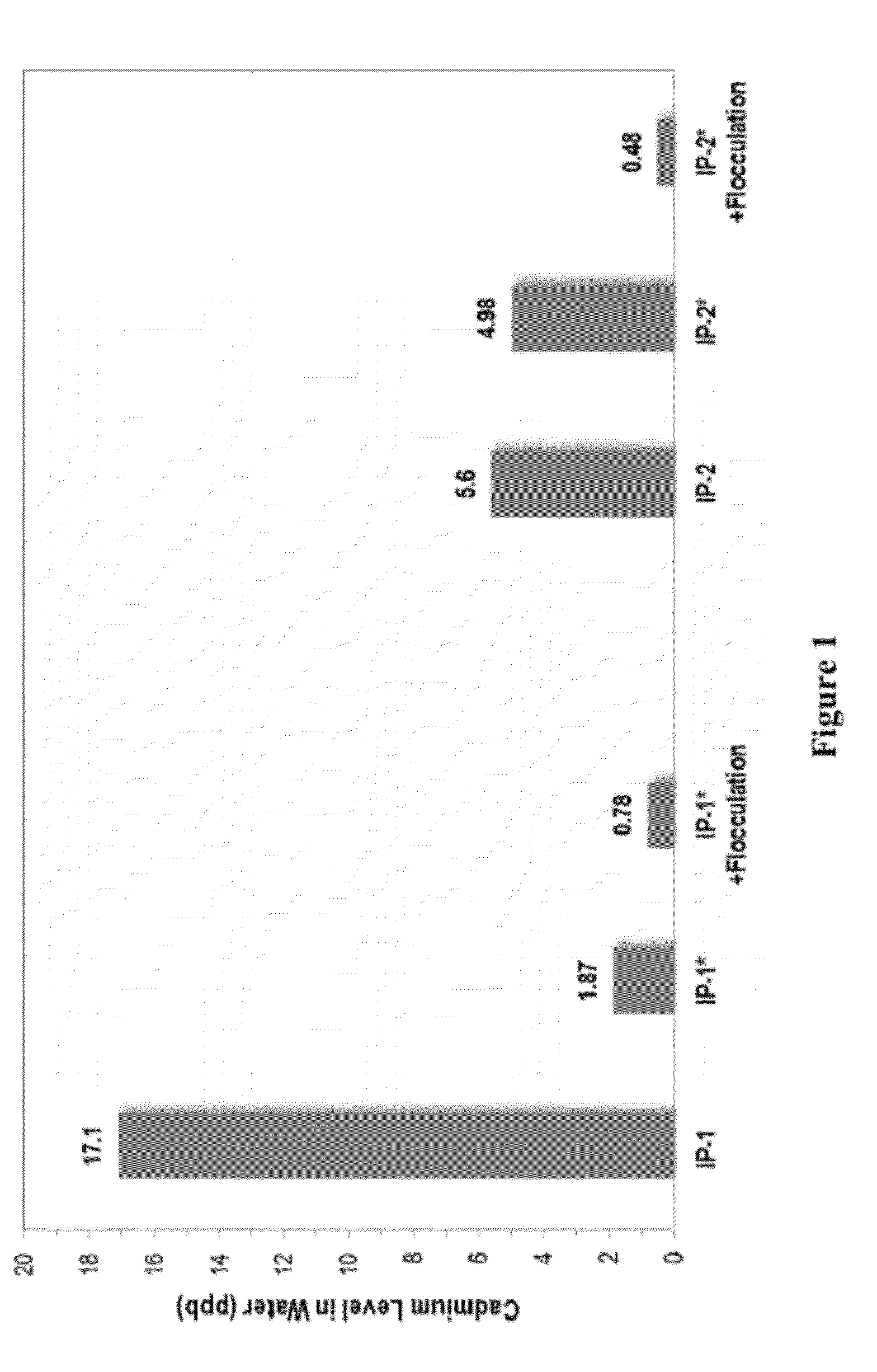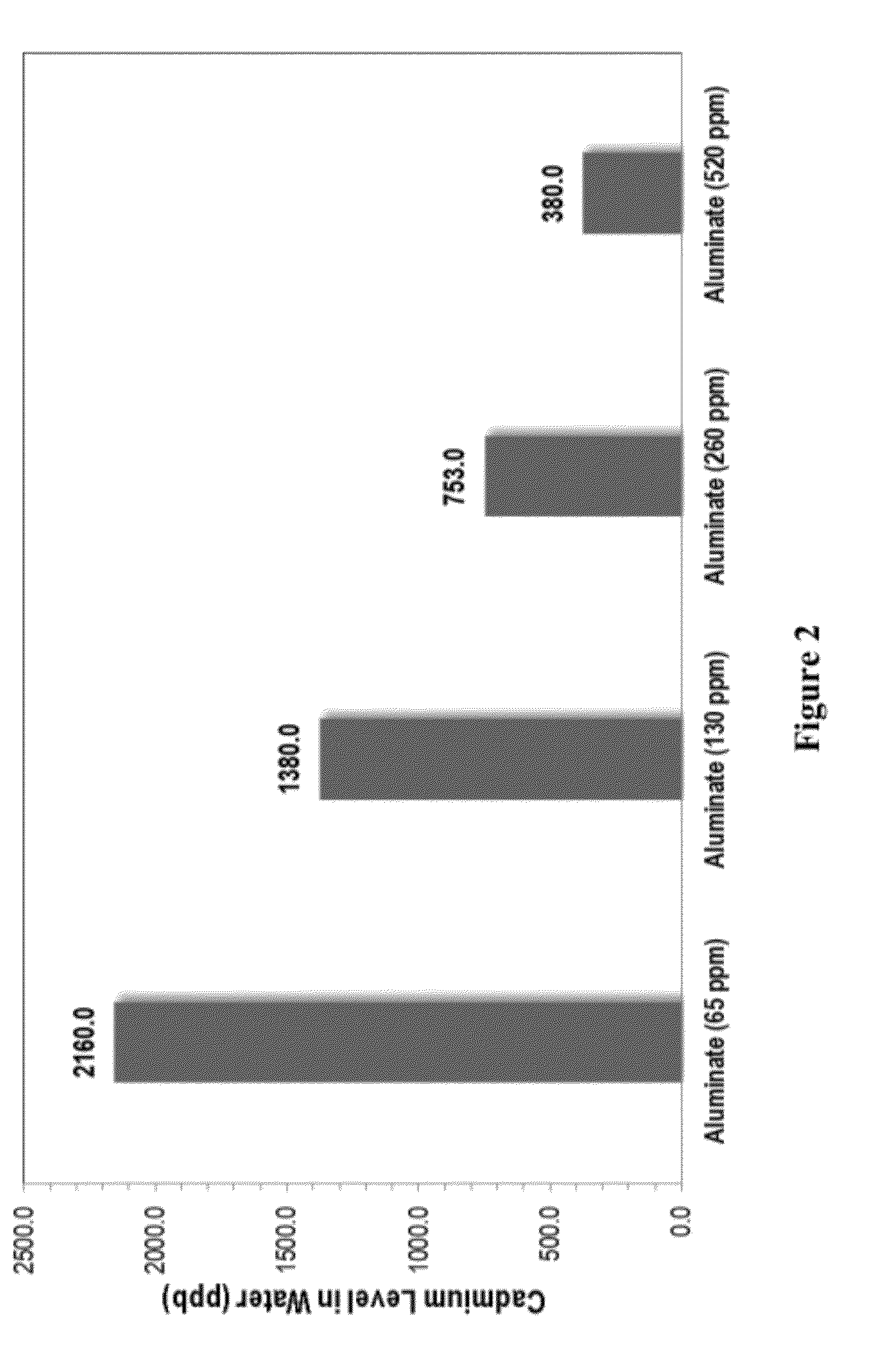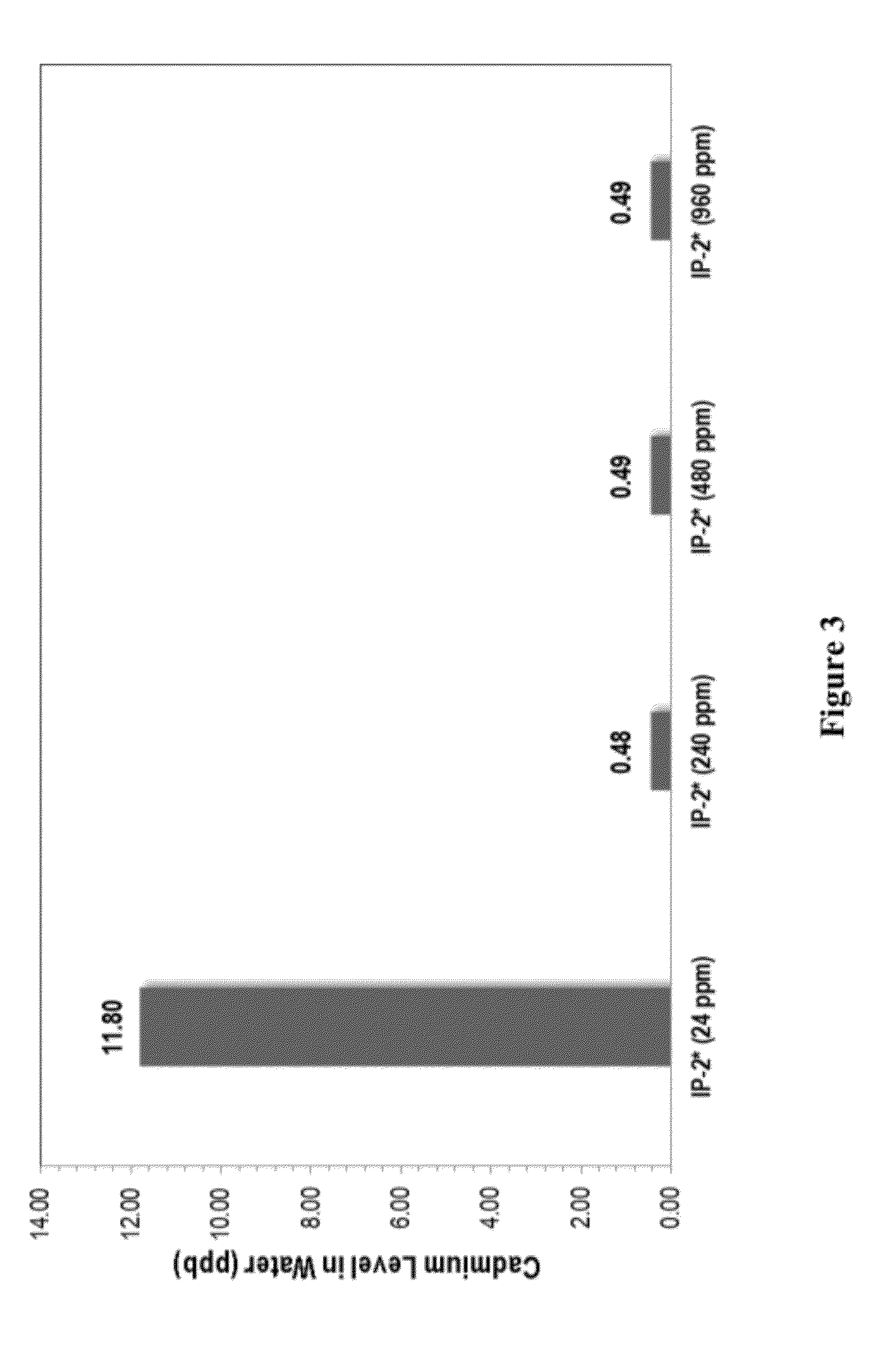Methods for removing contaminants from aqueous systems
a technology of aqueous systems and contaminants, applied in separation processes, quary waste water treatment, filtration treatment, etc., can solve the problem of adding additional hazardous waste that must be further
- Summary
- Abstract
- Description
- Claims
- Application Information
AI Technical Summary
Benefits of technology
Problems solved by technology
Method used
Image
Examples
example 1
[0080]In this example, and in Examples 2, 3, and 4, cadmium chloride (CdCl2) was purchased from Aldrich and used as received with no further purification. Lab-made aqueous solutions containing cadmium were prepared by dissolution of the chemical in city of Atlanta tap water. A Thermo Scientific ICP-AES system model iCAP 6200 equipped with a charge injection device (CID) detector and a CETAC ASX-520 autosampler was used for determination of cadmium species in water samples. Low detection limits (0.2 ppb for cadmium) were achieved by pre-concentration of 100 ml aqueous samples. Quantitative elemental analysis of trace elements was conducted on a Bruker S4 Explorer wavelength-dispersive X-ray fluorescence spectrometer.
[0081]Two hydraulic binder compositions (IP-1 and IP-2) were evaluated for their effectiveness in the treatment of cadmium contaminated water samples. Water samples were prepared having 3000 ppb cadmium. The water samples were treated with IP-1 or IP-2 and mixed for 2-3 h...
example 2
[0082]Water samples were treated with compositions containing a hydraulic binder and a sulfur promoter. Water samples were prepared having 30,000 ppb cadmium. The water samples were treated with IP-1* or IP-2* and mixed for 2-3 hours. Resulting suspensions were then left for gravity settling. Filtration of supernatant on a Whatman qualitative filter paper No. 5 (pore size of 2.5 μm) provided a clear, visible solid free water sample for ICP analysis. As shown in FIG. 1, hydraulic binder plus promoter samples (IP-1* and IP-2*, respectively), the cadmium was further reduced, for example, to 1.7 ppb in the case of IP-1* treatment.
example 3
[0083]Water samples were treated with compositions containing a hydraulic binder and a sulfur promoter, were subsequently flocculated using a commercial flocculant to accelerate the settling of suspended solids instead of gravity settling. Water samples were prepared having 30,000 ppb cadmium. The water samples were treated with IP-1* or IP-2*, and were mixed for 2-3 hours. Using a plastic syringe, a flocculant (Superfloc A-130HMW, Kemira Oyj) was added to each sample solution to obtain 0.5 to 7.5 ppm weight / weight in the sample. The samples were stirred for one minute, and allowed to settle for at least five minutes. The beaker contents were filtered using vacuum filtration or syringe filtration with 0.45 micron filters. As shown in FIG. 1, in these treatments (IP-1*+Flocculation and IP-2*+Flocculation, respectively), the cadmium level was even further reduced to 0.8 ppb (for IP-1*) and 0.5 ppb (for IP-2*). This indicated the presence of fine solids in the sample fluid which may pa...
PUM
 Login to View More
Login to View More Abstract
Description
Claims
Application Information
 Login to View More
Login to View More - R&D
- Intellectual Property
- Life Sciences
- Materials
- Tech Scout
- Unparalleled Data Quality
- Higher Quality Content
- 60% Fewer Hallucinations
Browse by: Latest US Patents, China's latest patents, Technical Efficacy Thesaurus, Application Domain, Technology Topic, Popular Technical Reports.
© 2025 PatSnap. All rights reserved.Legal|Privacy policy|Modern Slavery Act Transparency Statement|Sitemap|About US| Contact US: help@patsnap.com



